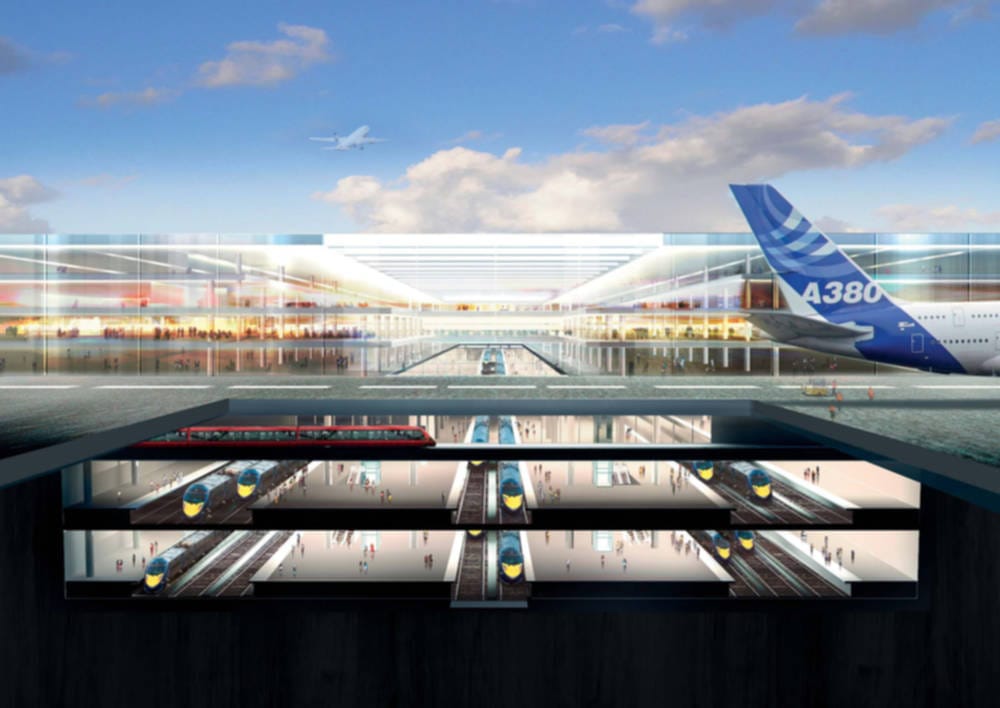More Airports for the UK?
Is the sky the limit, or will it never take off? Plane crazy or runway success?

Ever since its conception, the future expansion of Heathrow airport has been the topic of discussion of many a government. Generations of our ‘representatives’ have used the topic to their political gain, including the current coalition, who opposed the famous 3rd runway to help them garner support in the leafy west London suburb of Richmond Park. Now worry not, this is not an article about government policy; you’ve had enough of those from me for a while. Instead, I’d like to take a moment to outline what is possibly the most exciting, and vital project for kick-starting the UK’s failing economy: the Thames Hub.
Proposals for an airport in the Thames estuary have existed since the 1940s, but none have caught the public attention as much as the current offering from Foster & Partners. This is the same firm that brought you Hong Kong and Beijing Airports, Wembley Stadium and London City Hall, amongst many other projects. Widely publicized by Boris Johnson, Lord Foster’s latest airport in the Thames estuary would be a complete overhaul of transport in the South East, updating vital rail and road links, and other important infrastructure including a much needed update of the aging Thames barrier, and new hydroelectric power facility. The main argument behind the case for a Thames Estuary airport lies in the need to maintain London’s status as a hub airport. This is an airport where there are a large number of passengers passing through each year on flight transfers. This enables the airport to serve a wider network of destinations and to sustain a high frequency of services due to the demand for flights. These transferring passengers allow more direct flights to more destinations to be economically viable from London, thus giving access to cheaper and more frequent services for UK-based businesses and residents.
Heathrow handles just under 70 million passengers per year
Currently, Heathrow handles just under 70 million passengers per year, more than any other European airport, squeezed into its permitted 480,000 landing and takeoff slots. Back in the 1990s, Heathrow offered more destinations than any other European airport, yet recently has been faced with increased competition from hubs in Europe, including Frankfurt and Amsterdam. These two have 53% and 45% of capacity as transferring passengers, compared to Heathrow’s 35%. This, along with the availability of more runways, has allowed them to offer increasingly more destinations and services. Meanwhile, Heathrow has slipped to fifth in term of destinations offered, and will continue to slide if nothing is done.
What this means is that the already struggling British economy is set to lose out on a great deal of new trade and investment, especially from emerging markets such as Brazil and China. Studies show that we stand to lose between £8.6 and £12.8bn of investment as a result of the limitations posed by Heathrow’s lack of capacity. New connecting routes are urgently needed to tap into the vast potential of these new markets and Heathrow, even with a new 3rd runway, is not placed to do this.
Projects of this nature are never cheap, and Boris Island is no exception. Coming in at £50bn in total, the airport itself holds a price tag of £20bn and the associated infrastructure a lofty £30bn. However, to put this in perspective, a new terminal and runway at Heathrow would cost at least £9bn. Furthermore, the plans for the Thames Hub include sourcing much of the funding from private investors, thus relieving the burden on the Treasury coffers. Put simply, although an expensive option, it is by no means fiscally unachievable, even in the current economic climate.
The main opposition to this plan, as with any airport expansion, is found amongst the ranks of the environmentalists. The chosen location is apparently the home of some birds, which run the risk of falling out with their man-made flying cousins should the plans go ahead. However, are we seriously advocating that the welfare of a few birds should stand in the way of the continued recovery of the British ecoomy? Also, I understand that Heathrow’s current neighbors find it rather grim living in its flight path. It seems simply ludicrous that we as a society should put the lives of a few birds in ahead of the living standards of our citizens.
Unfortunately, we live in an increasingly bureaucratic state, where projects of this nature move from committee to committee without various governmental bodies at a glacial pace. Take the recently opened Heathrow Terminal 5: it took 20 years to progress from its design conception to its eventual opening, and it wasn’t even a particularly ambitious plan. In contrast, Beijing airport’s Terminal 3 took just over four years to be ready.
The rapid expansion currently taking place in China is fueling continued growth and Beijing Airport, as the second busiest in the world, has already been deemed by the central government as at capacity. Work has already started on what will be the world’s biggest airport, with a capacity of 130 million, and a breathtaking 9 runways. And furthermore, they plan to accomplish this all in time for a 2017 opening.
Now it would unrealistic to expect as rapid progress as occurs in China. Their efficiency is one positive that comes out of building in a one-party state. However, it is about time the British government took some decisive action. To quote Boris Johnson “there is no doubt that to do nothing would lead to economic stagnation” thus leaving London unable to compete on an international level. London needs to maintain its airport hub status, and this is becoming increasingly difficult by the day as the rest of the world surges ahead.








